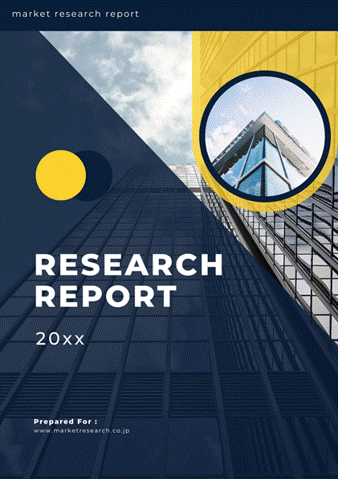 | • レポートコード:B-MOR-08403 • 出版社/出版日:Mordor Intelligence / 2018年7月1日 • レポート形態:英文、PDF、116ページ • 納品方法:Eメール(受注後2営業日) • 産業分類:Healthcare |
| Single User(1名様用) | ¥629,000 (USD4,250) | ▷ お問い合わせ |
| Team User(7名様用) | ¥666,000 (USD4,500) | ▷ お問い合わせ |
| Corporate User | ¥1,295,000 (USD8,750) | ▷ お問い合わせ |
• お支払方法:銀行振込(納品後、ご請求書送付)
レポート概要
| 本資料は、核医学・放射性同位体(ラジオアイソトープ)の世界市場について調べ、核医学・放射性同位体(ラジオアイソトープ)の世界規模、市場動向、市場環境、放射性同位体のタイプ別(テクネチウム-99m(Tc-99m)、タリウム-201(T1-110)、ヨウ素(I-123)、ガリウム-67(Ga-67)、フッ素-18、ルビジウム-82(Rb-82)、その他)分析、用途別(腫瘍学、心臓病学、リンパ腫、甲状腺、神経学、その他)分析、アメリカ市場規模、ヨーロッパ市場規模、アジア市場規模、日本市場規模、中国市場規模、企業の競争環境、関連企業情報などをまとめた調査レポートです。 ・イントロダクション ・エグゼクティブサマリー ・核医学・放射性同位体(ラジオアイソトープ)の世界市場インサイト ・核医学・放射性同位体(ラジオアイソトープ)の世界市場環境 ・核医学・放射性同位体(ラジオアイソトープ)の世界市場動向 ・核医学・放射性同位体(ラジオアイソトープ)の世界市場規模 ・核医学・放射性同位体(ラジオアイソトープ)の世界市場規模:放射性同位体のタイプ別(テクネチウム-99m(Tc-99m)、タリウム-201(T1-110)、ヨウ素(I-123)、ガリウム-67(Ga-67)、フッ素-18、ルビジウム-82(Rb-82)、その他) ・核医学・放射性同位体(ラジオアイソトープ)の世界市場規模:用途別(腫瘍学、心臓病学、リンパ腫、甲状腺、神経学、その他) ・核医学・放射性同位体(ラジオアイソトープ)の世界市場:地域別市場規模・分析 ・核医学・放射性同位体(ラジオアイソトープ)の北米市場規模・予測 ・核医学・放射性同位体(ラジオアイソトープ)のアメリカ市場規模・予測 ・核医学・放射性同位体(ラジオアイソトープ)のヨーロッパ市場規模・予測 ・核医学・放射性同位体(ラジオアイソトープ)のアジア市場規模・予測 ・核医学・放射性同位体(ラジオアイソトープ)の日本市場規模・予測 ・核医学・放射性同位体(ラジオアイソトープ)の中国市場規模・予測 ・核医学・放射性同位体(ラジオアイソトープ)のインド市場規模・予測 ・関連企業情報・競争状況 |
The global nuclear medicine radioisotope market was valued at USD 13.9 billion in 2017, and is expected to register a CAGR of 12.3% during the forecast period of 2018-2023. North America accounted for the largest share of approximately 40% of the global market, in 2017, whereas, Asia-Pacific is anticipated to register the highest CAGR over the forecast period.
Rising SPECT and PET Applications
The field of nuclear medicine is dominated by the applications related to positron emission tomography (PET) and single-photon emission computerized tomography (SPECT). The growing interest of PET technology in cardiac and neurological disorders is expected to fuel the market’s growth. More than 60% of SPECT procedures are performed in cardiology. In addition, orthopedics, oncology, and infection imaging are emerging as areas that can benefit from the same. Applications have been further increasing, through the inclusion of advancements in computed tomography (CT), making nuclear medicine the right choice for disease diagnosis. In addition, factors, such as rising incidences of cardiac and cancer cases, along with the rising awareness among the public, drive the nuclear medicine market.
High Capital Investments Involved
One of the major hindrance for the nuclear medicine radioisotope market is the high capital investments required for the generation of radionuclide. Cyclotron initial investment is very high, which is followed by renovation and installation. Further, annual operating costs are involved. With high investment, the cost of imaging and treatment becomes a factor of high expenditure, especially in developing markets. These factors, and unclear regulatory guidelines, varied reimbursement policies, and short half-life of radiopharmaceuticals restrict the growth of the market studied.
North America to Dominate the Market
The global nuclear medicine radioisotope market has been segmented by type of radioisotope, application in different indications, and geography. Geographically, the market has been segmented into North America, Europe, Asia-Pacific, Middle East & Africa, and South America.
North America dominated the nuclear medicine radioisotope market, with a share of 40%, in 2017. The factors, such as well-established healthcare facilities, growing geriatric population, rising awareness among people for nuclear medicine treatments and diagnosis, contribute to the growth of the regional market. Moreover, Asia-Pacific is estimated to register the highest CAGR during the forecast period.
Key Developments in the Market
• December 2017: Caris Life Sciences identified a new mechanism for the treatment of non-Hodgkin lymphoma (NHL), using a single-stranded DNA aptamer, C10.36, specifically binding to heterogeneous nuclear ribonucleoprotein U (hnRNP U)
• October 2017: Siemens Healthcare introduced biograph vision PET/CT system, a software platform at the 30th Annual Congress of the European Association of Nuclear Medicine (EANM), to provide a new level of precision in PET/CT imaging.
Major Players – MEDTRONIC PLC, GE HEALTHCARE, LANTHEUS MEDICAL IMAGING INC., HOLOGIC INC., CARDINAL HEALTH INC., BAYER HEALTHCARE AG, BRACCO IMAGING SPA, NTP RADIOISOTOPES SOC LTD, POSITRON CORPORATION, and SIEMENS HEALTHCARE, amongst others.
Reasons to Purchase This Report
• Analysis of the global nuclear medicine radioisotope market, with region-specific assessments and competition analysis, on global and regional scales.
• Analyzing various perspectives of the industry with the help of Porter’s five forces analysis.
• The treatment type that is expected to dominate the market.
• Regions that are expected to witness the fastest growth during the forecast period.
• Identify the latest developments, market shares, and strategies employed by the major market players.
• 3 months analyst support along with the Market Estimate sheet (in excel).
Customization of the Report
This report can be customized to meet your requirements. Please connect with our representative, who will ensure you get a report that suits your needs.
レポート目次1. Introduction
1.1 Market Definition
2. Research Methodology
3. Executive Summary
4. Key Inferences
5. Market Overview
5.1 Current Market Scenario
5.2 Porter’s Five Forces Analysis
5.2.1 Bargaining Power of Suppliers
5.2.2 Bargaining Power of Consumers
5.2.3 Threat of New Entrants
5.2.4 Threat of Substitute Product and Services
5.2.5 Degree of Competition
6. Drivers, Restraints, Opportunities and Challenges Analysis (DROC)
6.1 Market Drivers
6.1.1 Rising Incidences of Cancer and Cardiac Disorders
6.1.2 Widening Applications of Nuclear Medicine
6.1.3 Increasing SPECT and PET Applications
6.1.4 Increasing Patient Awareness for Healthcare
6.2 Market Restraints
6.2.1 Reimbursement Complications
6.2.2 Regulatory Issues
6.3 Opportunities
6.4 Key Challenges
7. Market Segmentation
7.1 By Type of Radioisotope
7.1.1 Technetium-99m (Tc-99m)
7.1.2 Thallium-201 (Tl-201)
7.1.3 Iodine (I-123)
7.1.4 Gallium-67 (Ga-67)
7.1.5 Fluorine-18
7.1.6 Rubidium-82 (Rb-82)
7.1.7 Other Types of Radioisotope
7.2 By Application
7.2.1 Oncology
7.2.2 Cardiology
7.2.3 Lymphoma
7.2.4 Thyroid
7.2.5 Neurology
7.2.6 Others
7.3 By Geography
7.3.1 North America
7.3.1.1 United States
7.3.1.2 Canada
7.3.1.3 Mexico
7.3.2 Europe
7.3.2.1 United Kingdom
7.3.2.2 Germany
7.3.2.3 France
7.3.2.4 Italy
7.3.2.5 Spain
7.3.2.6 Rest of Europe
7.3.3 Asia-Pacific
7.3.3.1 India
7.3.3.2 China
7.3.3.3 Japan
7.3.3.4 Rest of Asia-Pacific
7.3.4 Rest of the World
8. Competitive Landscape
8.1 Mergers & Acquisition Analysis
8.2 Agreements, Collaborations, and Partnerships
8.3 New Products Launches
9. Key Players
9.1 Agfa-Gevaert Group
9.2 Braco
9.3 Cardiarc Ltd
9.4 Cardinal Health Inc.
9.5 CMR Naviscan (Gamma Medica Inc.)
9.6 Curium
9.7 Digirad Corporation
9.8 GE Healthcare
9.9 Nordion (Canada) Inc.
9.10 NTP Radioisotopes SOC Ltd
9.11 Positron Corp.
9.12 Segami Corporation
9.13 Siemens Healthcare
10. Future Outlook of the Market